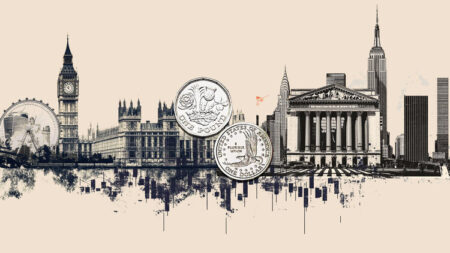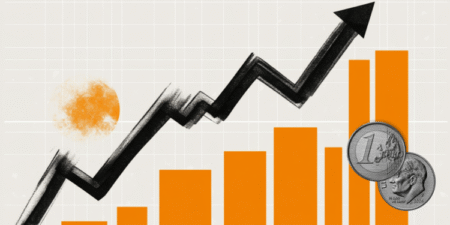Inflation in the United States (US), as measured by the change in the Consumer Price Index (CPI), remained unchanged at 2.7% on a yearly basis in July, the US Bureau of Labor Statistics reported on Tuesday. This reading came in below the market expectation of 2.8%.
On a monthly basis, the CPI and the core CPI rose by 0.2% and 0.3%, respectively, to match analysts’ estimates. Finally, the annual core CPI increased by 3.1%, following the 2.9% rise recorded in June and coming in above the market consensus of 3%.
Follow our live coverage of the US inflation data and the market reaction.
Market reaction to US inflation data
The US Dollar came under bearish pressure with the immediate reaction to the Consumer Price Index data. At the time of press, the US Dollar Index was down 0.15% on the day at 98.35.
US Dollar PRICE Today
The table below shows the percentage change of US Dollar (USD) against listed major currencies today. US Dollar was the weakest against the Swiss Franc.
| USD | EUR | GBP | JPY | CAD | AUD | NZD | CHF | |
|---|---|---|---|---|---|---|---|---|
| USD | -0.13% | -0.34% | 0.04% | 0.07% | 0.20% | 0.00% | -0.35% | |
| EUR | 0.13% | -0.18% | 0.16% | 0.23% | 0.36% | 0.16% | -0.19% | |
| GBP | 0.34% | 0.18% | 0.44% | 0.42% | 0.55% | 0.39% | 0.00% | |
| JPY | -0.04% | -0.16% | -0.44% | 0.06% | 0.16% | -0.02% | -0.27% | |
| CAD | -0.07% | -0.23% | -0.42% | -0.06% | 0.17% | -0.07% | -0.41% | |
| AUD | -0.20% | -0.36% | -0.55% | -0.16% | -0.17% | -0.20% | -0.56% | |
| NZD | -0.01% | -0.16% | -0.39% | 0.02% | 0.07% | 0.20% | -0.44% | |
| CHF | 0.35% | 0.19% | -0.00% | 0.27% | 0.41% | 0.56% | 0.44% |
The heat map shows percentage changes of major currencies against each other. The base currency is picked from the left column, while the quote currency is picked from the top row. For example, if you pick the US Dollar from the left column and move along the horizontal line to the Japanese Yen, the percentage change displayed in the box will represent USD (base)/JPY (quote).
This section below was published as a preview of the July Consumer Price Index data at 03:00 GMT.
- The US Consumer Price Index is set to rise 2.8% YoY in July, at a faster pace than June’s 2.7% increase.
- The Fed is widely expected to cut the policy rate by 25 bps in September.
- July inflation data could significantly influence the US Dollar’s valuation.
The United States (US) Bureau of Labor Statistics (BLS) will publish the all-important Consumer Price Index (CPI) data for July on Tuesday at 12:30 GMT.
Markets will look for fresh signs of how US President Donald Trump’s tariffs are feeding through to prices. Therefore, the US Dollar (USD) could experience volatility on the CPI release, as the data could influence the Federal Reserve’s (Fed) interest rate outlook for the remainder of the year.
What to expect in the next CPI data report?
As measured by the change in the CPI, inflation in the US is expected to rise at an annual rate of 2.8% in July, having recorded a 2.7% increase in June. The core CPI inflation, which excludes the volatile food and energy categories, is forecast to rise 3% year-over-year (YoY), compared to the 2.9% acceleration reported in the previous month.
Over the month, the CPI and the core CPI are seen advancing by 0.2% and 0.3%, respectively.
Previewing the report, analysts at TD Securities said: “We expect the July CPI report to show that core inflation gained additional momentum. We look for goods prices to gather further steam, as tariff pass-through continues to materialize. The services segment will likely not help offset that momentum. We project headline inflation to go sideways in July despite a deceleration in food and energy.”
How could the US Consumer Price Index report affect EUR/USD?
Heading into the US inflation showdown on Tuesday, investors remain convinced that the Fed will opt for a 25 basis points (bps) reduction in the policy rate in September. According to the CME FedWatch Tool, markets are currently pricing in about a 90% probability of a rate cut at the next meeting.
Latest comments from Fed officials point to a difference in opinion on the inflation outlook. Atlanta Fed President Raphael Bostic warned that rising price pressures over the next six to twelve months could intensify the Fed’s challenges.
Conversely, St. Louis Fed President Alberto Musalem argued that it is likely that most of the impact of tariffs on inflation will fade. On a more dovish note, Fed Governor Michelle Bowman said recently that the latest weak labor market data strengthened her confidence in her own forecast that three interest rate cuts will likely be appropriate this year.
Although the July inflation data by itself might not be influential enough to sway the market expectation for a Fed rate cut in September, it could still have an overall impact on the policy outlook for the rest of the year.
The CME FedWatch Tool shows that there is about a 45% probability that the Fed will lower rates three times this year. A soft headline inflation reading of 2.6%, or lower, could feed into expectations of three rate cuts and weigh heavily on the US Dollar (USD) with the immediate reaction. On the other hand, a print above the market consensus of 2.8% could support the currency.
In case the headline print arrives at the market expectation, investors could react to the core inflation readings, more specifically to the monthly one. A monthly core CPI print of 0.4%, or higher, could be supportive for the USD.
Eren Sengezer, European Session Lead Analyst at FXStreet, offers a brief technical outlook for EUR/USD and explains:
“The near-term technical outlook points to a neutral bias for EUR/USD. The Relative Strength Index (RSI) indicator on the daily chart moves sideways slightly above 50 and the 20-day and the 50-day Simple Moving Averages (SMAs) converge slightly below the price.”
“While EUR/USD remains above 1.1600-1.1620 (static level, 20-day SMA, 50-day SMA), technical buyers could remain interested. In this scenario, 1.1700 (static level, round level) could be seen as an interim resistance level before 1.1830 (July 1 high) and 1.1900 (static level, round level).”
“Looking south, the Fibonacci 23.6% retracement of the January-July uptrend aligns as the first support level at 1.1440 before 1.1400 (100-day SMA) and 1.1200 (Fibonacci 38.2% retracement).”
Fed FAQs
Monetary policy in the US is shaped by the Federal Reserve (Fed). The Fed has two mandates: to achieve price stability and foster full employment. Its primary tool to achieve these goals is by adjusting interest rates.
When prices are rising too quickly and inflation is above the Fed’s 2% target, it raises interest rates, increasing borrowing costs throughout the economy. This results in a stronger US Dollar (USD) as it makes the US a more attractive place for international investors to park their money.
When inflation falls below 2% or the Unemployment Rate is too high, the Fed may lower interest rates to encourage borrowing, which weighs on the Greenback.
The Federal Reserve (Fed) holds eight policy meetings a year, where the Federal Open Market Committee (FOMC) assesses economic conditions and makes monetary policy decisions.
The FOMC is attended by twelve Fed officials – the seven members of the Board of Governors, the president of the Federal Reserve Bank of New York, and four of the remaining eleven regional Reserve Bank presidents, who serve one-year terms on a rotating basis.
In extreme situations, the Federal Reserve may resort to a policy named Quantitative Easing (QE). QE is the process by which the Fed substantially increases the flow of credit in a stuck financial system.
It is a non-standard policy measure used during crises or when inflation is extremely low. It was the Fed’s weapon of choice during the Great Financial Crisis in 2008. It involves the Fed printing more Dollars and using them to buy high grade bonds from financial institutions. QE usually weakens the US Dollar.
Quantitative tightening (QT) is the reverse process of QE, whereby the Federal Reserve stops buying bonds from financial institutions and does not reinvest the principal from the bonds it holds maturing, to purchase new bonds. It is usually positive for the value of the US Dollar.
Read the full article here















